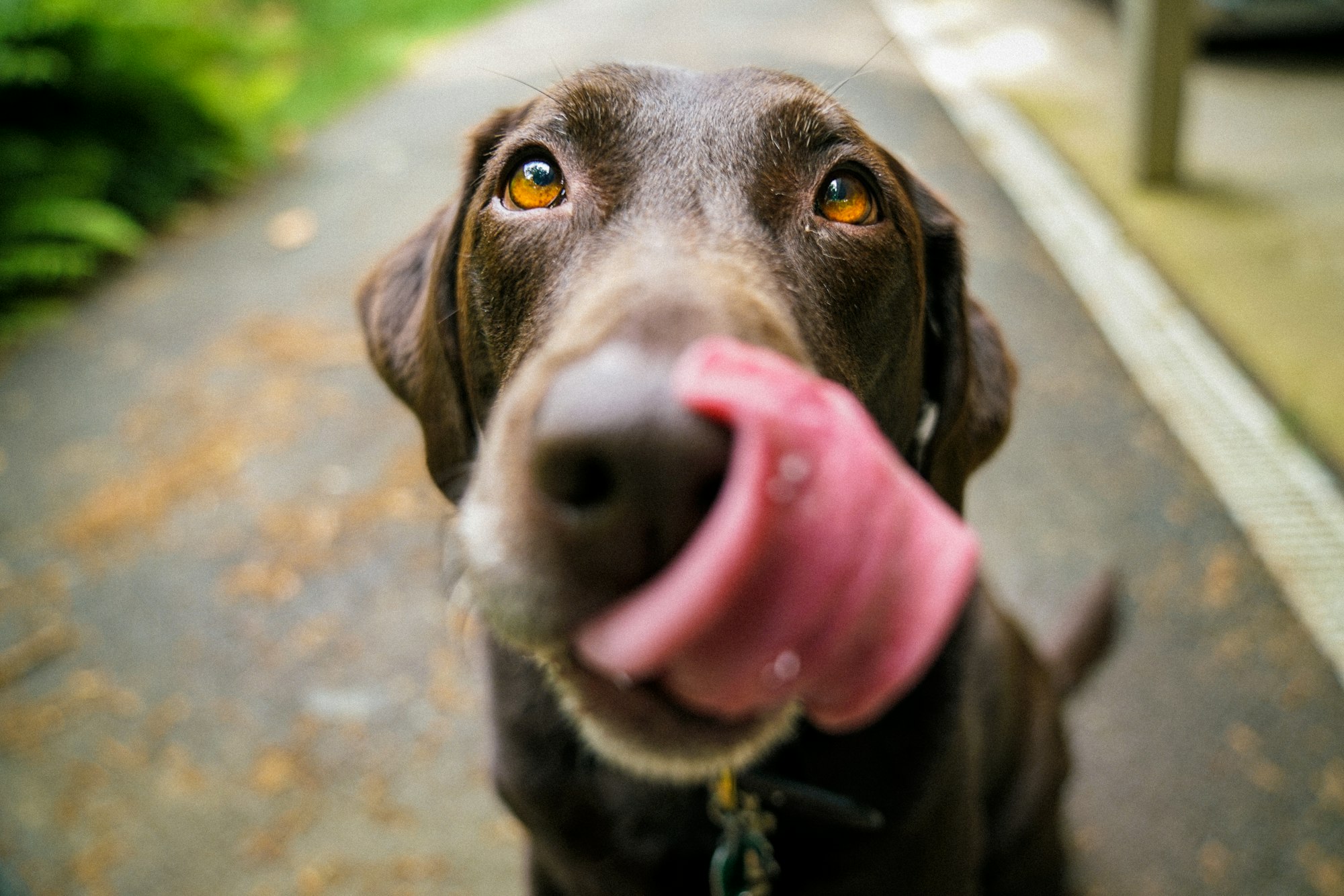Insect stings can be painful and even dangerous for our furry friends. Dogs are naturally curious and may get stung by bees, wasps, or other insects while exploring the outdoors. As a responsible pet owner, it's essential to know the signs and symptoms of a dog bee or wasp sting and how to provide proper first aid.
In this article, we'll cover everything you need to know about dog bee stings, from recognizing the symptoms and assessing their severity to providing at-home care and seeking professional treatment. We'll also discuss preventive measures you can take to reduce the risk of your dog getting a dog stung by bee, in the first place. Let's dive in!
What To Look For If Dog Stung By Bee
A bee sting can cause an immediate reaction in a dog, and it's important to know the signs and symptoms so you can provide appropriate care. One common reaction is swelling around the sting site, which can be severe if the dog is allergic or has been stung multiple times.
Dogs may also yelp, whimper, or show signs of discomfort and may lick, scratch or bite at the sting site. The skin around the sting site may turn red or pink, and some dogs may develop hives or raised bumps on their skin. Itching at the sting site is also common.
In severe cases, bee stings can cause an allergic reaction that affects the dog's breathing, so it's important to seek emergency veterinary care if you notice your dog struggling to breathe or gasping for air.
It's worth noting that some dogs may not show visible signs of a bee sting, especially if they've been stung internally (e.g., in the mouth or throat), so it's important to monitor them closely for any unusual behavior or other symptoms even if you suspect a sting.

List of Symptoms of a Bee Sting In Dogs
- Swelling: The area around the sting site may become swollen and inflamed. In some cases, the swelling can be severe, especially if the dog has been stung multiple times or is allergic to bee stings.
- Pain and discomfort: Dogs may yelp, whimper, or show signs of discomfort when they get stung. They may also lick or bite at the sting site.
- Redness: The skin around the sting site may turn red or pink.
- Hives: Some dogs may develop hives or raised bumps on their skin in response to a bee sting.
- Itching: The sting site may be itchy and cause the dog to scratch or rub against furniture or the floor.
- Difficulty breathing: In severe cases, bee stings can cause an allergic severe reaction that affects the dog's breathing. If you notice your pet showing signs and are struggling to breathe or gasping for air after a bee sting, seek emergency veterinary care immediately.
Are Bee Stings Dangerous In Dogs?
Bee stings can be dangerous in pets, especially if they are allergic or have multiple stings. The severity of the reaction depends on various factors, such as the size of the pet, the number of stings, and the location of the sting. While most pups may experience mild to moderate symptoms, some may develop a severe or even life-threatening allergic reaction called anaphylaxis.
Anaphylaxis is a severe allergic reaction that affects multiple organs in the dog's body and can cause breathing difficulties, collapse, and even death if left untreated. If you suspect that your pet is experiencing anaphylaxis, you should seek emergency veterinary care immediately. Signs of anaphylaxis in dogs include vomiting, diarrhea, pale gums, rapid heart rate, weak pulse, and seizures.
In addition to anaphylaxis, bee stings can also lead to secondary infections, especially if the dog scratches or licks at the sting site. Infections can cause additional pain, swelling, and fever and may require antibiotic treatment. Additionally, if a dog is stung in the mouth or throat, the severe swelling can interfere with their ability to breathe or swallow, which can be life-threatening if not by a vet immediately.
While bee stings can be dangerous, most dogs stung by a bee can recover fully with appropriate treatment and care. It's important to monitor your dog closely after a bee sting and seek vet care if you notice any concerning symptoms or if you suspect that your pet may be experiencing anaphylaxis. Taking preventive measures, such as avoiding areas with high bee activity or using protective clothing, can also help reduce the risk of anaphylactic shock from bee stings in dogs.

How to care for a bee sting at home
If your pet has been stung by a bee, wasp, or hornet, there are several steps you can take to provide initial care at home. Here are some tips on how to care for your dog's bee sting:
- Remove the stinger: If you can see the stinger in the affected area, use a pair of tweezers or scrape it out with a credit card or fingernail. Avoid squeezing the stinger, as this can release more venom into your dog's skin.
- Clean the area: Once the stinger has been removed, clean the area around the sting with soap and water or a mild antiseptic. This helps to prevent infection.
- Apply a cold compress or ice pack: Use a cold, damp cloth or an ice pack wrapped in a towel to the sting site. This can help minimize swelling and pain.
- Offer pain relief: If your pet is in pain, you can give them a pain reliever that is safe for dogs (consult with your veterinarian first). Never give your dog aspirin or any other medication that contains aspirin, as this can be toxic to dogs.
- Monitor your dog: Keep an eye on your dog for the next few hours to ensure that they don't experience any severe or unusual symptoms. If you notice any signs of an allergic reaction, such as trouble breathing or a swollen dog's face, seek emergency vet care immediately. Make sure to offer your dog fresh water to keep them hydrated.
It's important to note that while home care can help alleviate common symptoms of an insect bite or bee sting, it does not replace professional veterinary treatment. If your dog shows signs of a major allergic reaction or if you are unsure how to provide proper care, it's always best to consult with your veterinarian.
Additionally, if your dog has been stung many times or has a history of severe allergic reactions, you may want to consider carrying an EpiPen or other care prescribed by your veterinarian to avoid an emergency situation.
Anaphylactic Bee Reactions in Dogs
Anaphylactic reactions to bee stings can occur in dogs and can be life-threatening if not treated at the first sign. Anaphylaxis is a severe allergic reaction that affects multiple organs in the body, including the respiratory and cardiovascular systems. In dogs, anaphylaxis is usually triggered by repeated stings or exposure to large amounts of venom from an insect bite, although some dogs may develop mild symptoms of anaphylaxis after a single sting.
Anaphylaxis in dogs includes vomiting, diarrhea, pale gums, rapid heart rate, weak pulse, collapse, and difficulty breathing. If you suspect that your dog is experiencing anaphylaxis, it's crucial to find a veterinarian immediately. Care may involve epinephrine (adrenaline), anti histamines, oxygen therapy, additional medications and other supportive measures.
Anaphylactic reactions to bee stings in dogs are relatively rare, but they can be fatal if left untreated. The incidence of anaphylaxis varies depending on the dog's breed, size, age, and overall health, as well as the type of bee or wasp and the amount of venom injected.
Some studies suggest that up to 7% of dogs may be allergic to insect stings, although most of these reactions are mild to moderate in severity. Certain breeds, such as boxers, golden retrievers, and German shepherds, may be more prone to developing anaphylaxis than others.
What to expect from the vet for the treatment of bee stings?
If your dog has been stung by a bee, wasp, or hornet and is experiencing severe symptoms, it's crucial to seek vet care as soon as possible. The veterinarian will perform a physical examination and may order diagnostic tests, such as blood work or imaging, to assess your dog's condition and determine the appropriate treatment.
Treatment for insect stings in dogs may include antihistamines, pain relievers, and steroids to reduce inflammation and alleviate symptoms. In severe cases, the veterinarian may administer epinephrine (adrenaline) or oxygen therapy to support the dog's breathing and cardiovascular function. Additionally, if your dog is experiencing anaphylaxis, the veterinarian may recommend hospitalization and close monitoring until the anaphylactic reaction subsides.
The cost of treatment for bee stings in dogs can vary depending on the severity of the reaction and the specific treatments required. In general, mild to moderate reactions can be treated with home care or over-the-counter medications, while severe reactions may require emergency veterinary care or hospitalization. It's important to discuss the estimated cost of treatment with your veterinarian and to consider pet insurance or other financial resources to help cover the expenses.
How to Prevent Dog Bee Stings
Preventing bee stings in dogs is important to keep them safe and avoid unnecessary discomfort. Here are some tips on how to prevent dog bee stings:
- Avoid areas with high bee activity: If possible, avoid taking your dog to areas where bees are abundant, such as flower gardens, fruit trees, or beehives.
- Use protective clothing: If you need to take your dog to an area with high bee activity, consider using protective clothing, such as long-sleeved shirts, pants, and hats.
- Keep your dog leashed: Keeping your dog on a leash can help you control their movements and avoid areas with bees.
- Avoid sweet-smelling products: Bees are attracted to sweet smells, so avoid using sweet-smelling shampoos, perfumes, or lotions on your dog.
- Train your dog: Teaching your dog to avoid bees and other insects can help prevent bee stings. Consider enrolling your dog in obedience training or working with a professional dog trainer.
- Check for bees: Before allowing your dog to enter a new area, scan the area for bees, wasps, or other insects.
- Trim bushes and trees: Keeping bushes and trees trimmed can reduce the risk of bees nesting in these areas.
By following these preventive measures, you can help reduce the risk of your dog getting stung by bees or other insects. Additionally, if your dog has a history of severe reactions to bee or other insect stings, or other allergies, consult with your veterinarian about preventive measures, such as immunotherapy or emergency medication.

Final Thoughts
Insect stings can be painful and even dangerous for dogs, but with proper knowledge and care, you can help your furry friend recover quickly and avoid serious complications. By recognizing the signs and symptoms of a bee sting, providing appropriate first aid at home, and seeking veterinary care when necessary, you can ensure the best possible outcome for your dog.
Remember to always monitor your dog closely after a bee sting and seek veterinary care if you notice any concerning symptoms or suspect anaphylaxis. Taking preventive measures, such as avoiding areas with high bee activity, using protective clothing, and training your dog, can also help reduce the risk of bee stings in dogs.
As a responsible pet owner, it's important to be prepared for emergencies and to have a plan in place for providing first aid to your dog. With the right tools, knowledge, and resources, you can help keep your furry friend safe and healthy. If you have any concerns or questions about your dog's health or behavior, consult with your veterinarian for personalized advice and guidance.
Get more expert advice on pet-parenting by visiting the Off Leash blog at TryFi.com.
TryFi's The Fi Dog Collar is a must-have for any pet parent, it's a GPS tracking collar that helps you keep tabs on your dog's location, activity, and sleep patterns, and alerts you if they escape your backyard. Try the Fi Dog Collar today!






